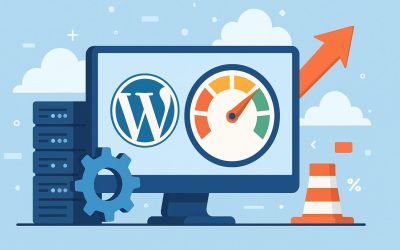Essential features of direct mailing for success in the real estate industry
December 20, 2024

What makes direct mailing a powerful strategy in a highly competitive industry? While digital advertising is popular, direct mailing has proven to be a reliable tool for agents looking to generate leads, establish a solid local presence, and build lasting client relationships.
It allows agents to reach potential clients more effectively by delivering physical materials directly to them. This approach often steers to higher engagement and better results than digital campaigns alone.
When implemented correctly, direct mail for real estate delivers tangible results by reaching prospects directly, increasing engagement, and driving conversions. It enables agents to tailor messages to specific neighborhoods, enhancing the relevance of their campaigns.
By building trust and familiarity over time, agents can create stronger connections with potential clients. This article outlines the essential features of direct mailing that contribute to success in the real estate sector and offers strategies for maximizing its effectiveness.
Understanding the role of direct mailing in real estate
Direct mailing refers to the strategy of sending physical marketing materials, such as postcards, newsletters, or brochures, to targeted addresses within a specific area. Despite the rise of digital marketing, direct mail remains a crucial tactic for professionals seeking a tangible connection with potential clients.
It delivers messages directly to recipients, often generating higher engagement rates compared to purely digital campaigns. This approach is particularly valuable in the real estate industry, where location-based marketing is critical.
By focusing efforts on specific neighborhoods, agents can establish credibility, create trust, and create a recognizable presence within the community.
Key features of effective direct mailing
Agents need to incorporate key features into their direct mailing campaigns to achieve success. Here are the most critical elements:
Targeted distribution
The effectiveness of direct mailing relies heavily on targeted distribution. This means selecting the right geographic area based on turnover rates, demographics, and local market trends. Focusing on areas with high turnover rates or growing demand ensures that mailers reach prospects who are more likely to be interested in buying or selling properties.
Agents can refine their targeting further by segmenting audiences based on property types, income levels, or buying behavior. Targeted distribution not only maximizes the impact of each campaign but also ensures a better return on investment.
Compelling design
Design plays an important role in capturing recipients’ attention. A visually appealing mailer is more likely to be read and remembered. Agents should use high-quality images, clear fonts, and bold headlines to create engaging designs.
To make designs more effective, include elements like the agent’s photo, branding, and a solid call to action. A clean layout with well-organized content enhances readability and ensures that the message gets across quickly.
Personalized messaging
Personalization is a key factor in successful direct mailing. Recipients are more likely to engage with materials that are relevant to their needs. By addressing recipients by name and tailoring messages to reflect local market trends or recent sales, agents can create a more meaningful connection with prospects.
For example, a postcard featuring recent sales in the neighborhood or offering a free property valuation can motivate recipients to respond. Personalization not only increases engagement but also builds trust, as it shows that the agent understands the recipient’s specific needs.
Clear call to action
Each direct mail piece should feature a clear and engaging call to action (CTA). The CTA guides recipients on the next steps, whether it’s scheduling a consultation, visiting an open house, or signing up for a newsletter.
Consistent campaigns
Consistency is essential for building brand recognition and trust within the target area. Successful agents maintain regular mailing campaigns, sending materials monthly, bi-monthly, or quarterly. Consistent campaigns help agents stay top-of-mind and reinforce their presence in the community.
Strategies for maximizing direct mailing success
To make the most of direct mailing, real estate professionals should implement the following strategies:
Integrate with digital marketing
While direct mailing is effective on its own, integrating it with digital marketing can enhance overall results. Agents can use multi-channel campaigns to ensure consistent messaging across different platforms, increasing engagement and response rates.
For example, agents can follow up direct mailers with email campaigns, reinforcing the message and encouraging further interaction. Incorporating QR codes or website links on mailers can also drive recipients to online resources, creating a seamless evolution between offline and online marketing.
Use analytics to track results
Measuring the success of direct mailing campaigns is crucial for making informed adjustments. Agents should track key metrics such as response rates, conversion rates, and return on investment. This data-driven approach helps agents understand which elements of their campaigns are working and which need improvement.
By analyzing metrics, agents can refine their targeting, messaging, and design to optimize future campaigns. For instance, if a specific type of mailer generates more leads than others, agents can allocate more resources to that format.
Leverage seasonal themes
Seasonal themes can make direct mailing more engaging and timely. Agents can create mailers that align with holidays, back-to-school events, or market-specific seasons like spring selling. Seasonal themes add a sense of relevance and urgency, increasing the likelihood of a response.
For example, a winter-themed mailer offering tips on preparing a home for the colder months can be both helpful and memorable. By aligning messages with the season, agents can enhance engagement and build stronger connections with recipients.
Ensure follow-ups
A single direct mailing campaign is often not enough to convert leads. Agents should have a follow-up system in place to maintain contact with potential clients. This can include follow-up calls, emails, or even additional mailers.
Regular follow-ups keep agents top-of-mind and show recipients that the agent is proactive and engaged. By maintaining consistent communication, agents increase the likelihood of converting leads into clients.
Direct mailing remains a vital tool for success in the real estate industry. Its tangible, personalized nature allows agents to establish a strong local presence, generate leads, and build lasting client relationships. By incorporating essential features like targeted distribution, compelling design, and consistent messaging, agents can maximize the impact of their campaigns.
Conclusion
When used strategically, direct mail for real estate can deliver impressive results, especially when integrated with digital marketing and backed by a data-driven approach. In a competitive market, this traditional yet powerful strategy can significantly enhance visibility, credibility, and profitability.
More must-read stories from Enterprise League:
- Tactics for using TikTok marketing for your small business successfully.
- Find out all the things that make messy people smarter.
- How to ask for a deposit in a contract without being awkward or losing a client.
- All the reasons why we should support local businesses and shop local.
- Importance of online privacy laws in the digital era and how they protect us.
Related Articles
How to Get Faster Load Times with WordPress Website Hosting
Website speed influences how visitors interact with content. An efficient hosting platform can transform a sluggish WordPress site into a swift and responsive experience. People expect websites to load quickly, often forming opinions within seconds. If your pages load...
Who Are the Top Forklift Dealers in Maryland? 8 Options for Business Owners
Maryland has a thriving commercial sector, ranging from logistics and distribution centers along the I-95 corridor to manufacturing facilities in the Baltimore metropolitan area. For these businesses, efficient material handling forms the foundation of their...
What Are the Best Auto Part Shipping Companies? 8 Options to Consider
Automotive parts come in a wide range of shapes and sizes, from small pieces to large engines and beyond. Different businesses may require certain components for their machinery, and it's vital to ensure that they arrive safely on time. Learn which companies are the...
How to Get Faster Load Times with WordPress Website Hosting
Website speed influences how visitors interact with content. An efficient hosting platform can transform a sluggish WordPress site into a swift and responsive experience. People expect websites to load quickly, often forming opinions within seconds. If your pages load...
Who Are the Top Forklift Dealers in Maryland? 8 Options for Business Owners
Maryland has a thriving commercial sector, ranging from logistics and distribution centers along the I-95 corridor to manufacturing facilities in the Baltimore metropolitan area. For these businesses, efficient material handling forms the foundation of their...





